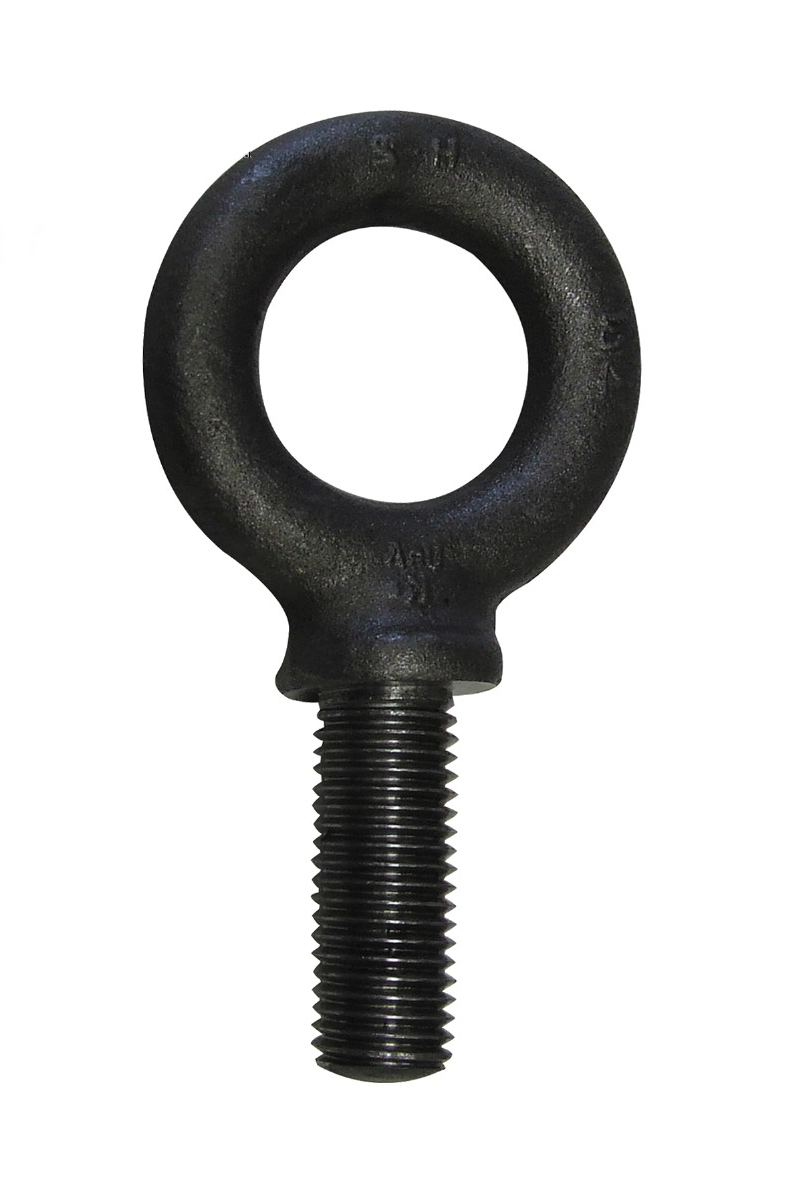What is an Eyebolt? |
|
 |
An eyebolt is a special type of fastener that resembles a lollipop. One end of the eyebolt resembles the threaded end of a screw, and the other side is forged into a circular shape. In a standard eyebolt, the shank (area of the bolt that isn’t threaded) of the bolt is centered below the mid-point of the circle.
Eyebolt Uses Typically, an eyebolt is used to secure a cable, string, wire, or chain to some other object. For example, these bolts may be inserted into a ceiling or beam to support signs and heavy objects. An eyebolt installed in the floor can help support a hanging object and increase stability. Eyebolts feature a forged construction. In a forged bolt, the eye at the top is made by bending a piece of steel to form a loop. Eyebolt Safety Precautions When choosing an eyebolt, installers must find a unit that can safely support the required load. Generally, longer bolts and those with a thicker shank can support heavier weights. A large diameter eye can accommodate thicker objects like chains or heavy cables, while eyes with a smaller diameter can accommodate strings and thin wires. An eyebolt is meant to be used at a 0 degree angle or a straight pull, meaning that it should be used perpendicular to the ground or ceiling. Although eyebolts can be used at greater angles up to 45 degrees, this lessens the load capacity significantly. If a user is unaware of this change, it can be dangerous to use. For example, a standard 5/8” shoulder eyebolt has a load capacity of 4000 pounds at 0 degrees. However, when the eyebolt is pulled at a 45 degree angle, the load capacity is only 1000 pounds. So while a user may think that they eyebolt can support the large weight that they need it for, it might actually be at risk of falling. Installing an eyebolt to support an angular load of more than 45 degrees is not recommended. Instead, users must use a swivel hoist ring that provides full 180 degree angular support for heavy weights. Eyebolt Longevity Many eyebolts are made of carbon steel, but like all steel objects, these bolts may rust or corrode over time. Bolts used outdoors should be made from galvanized steel to resist rust from rain and other forms of precipitation. If the eyebolt will be used around chemicals or in an industrial setting, stainless steel eyebolts will minimize the risk of corrosion and help the bolt hold up more effectively over time. |
Eyebolts
Categories: Wire Rope & Chain Fittings


